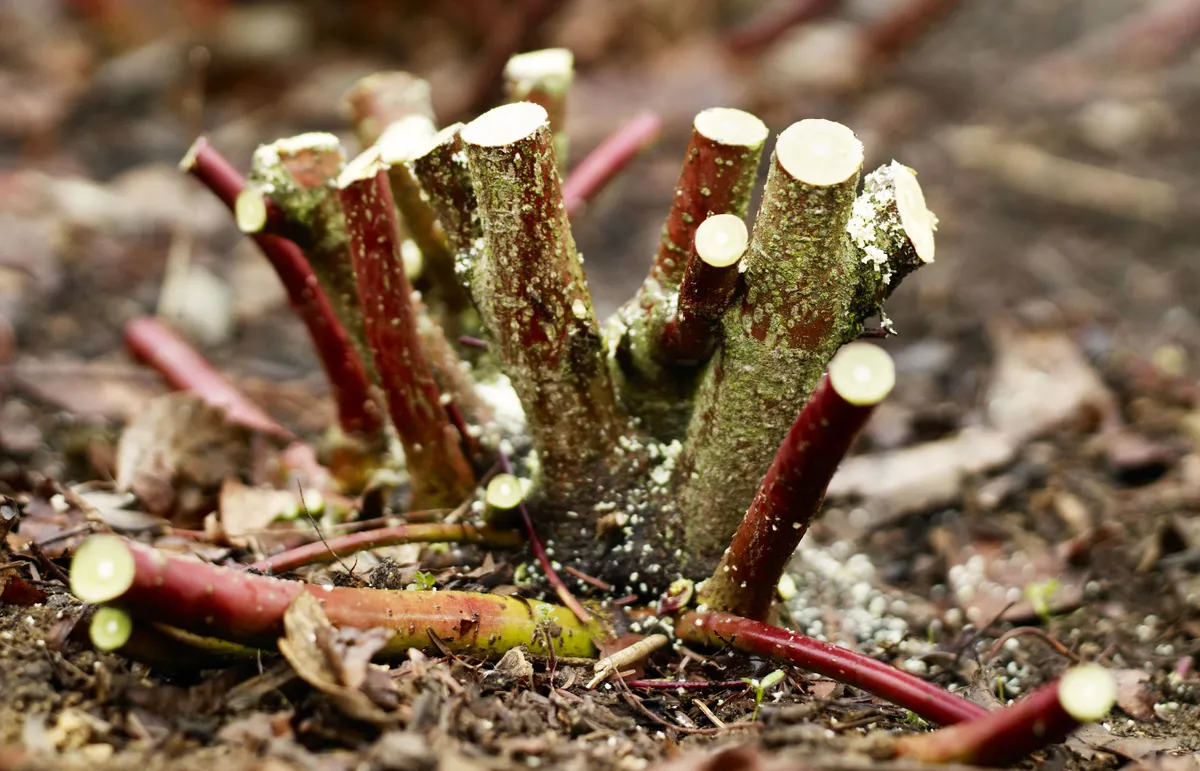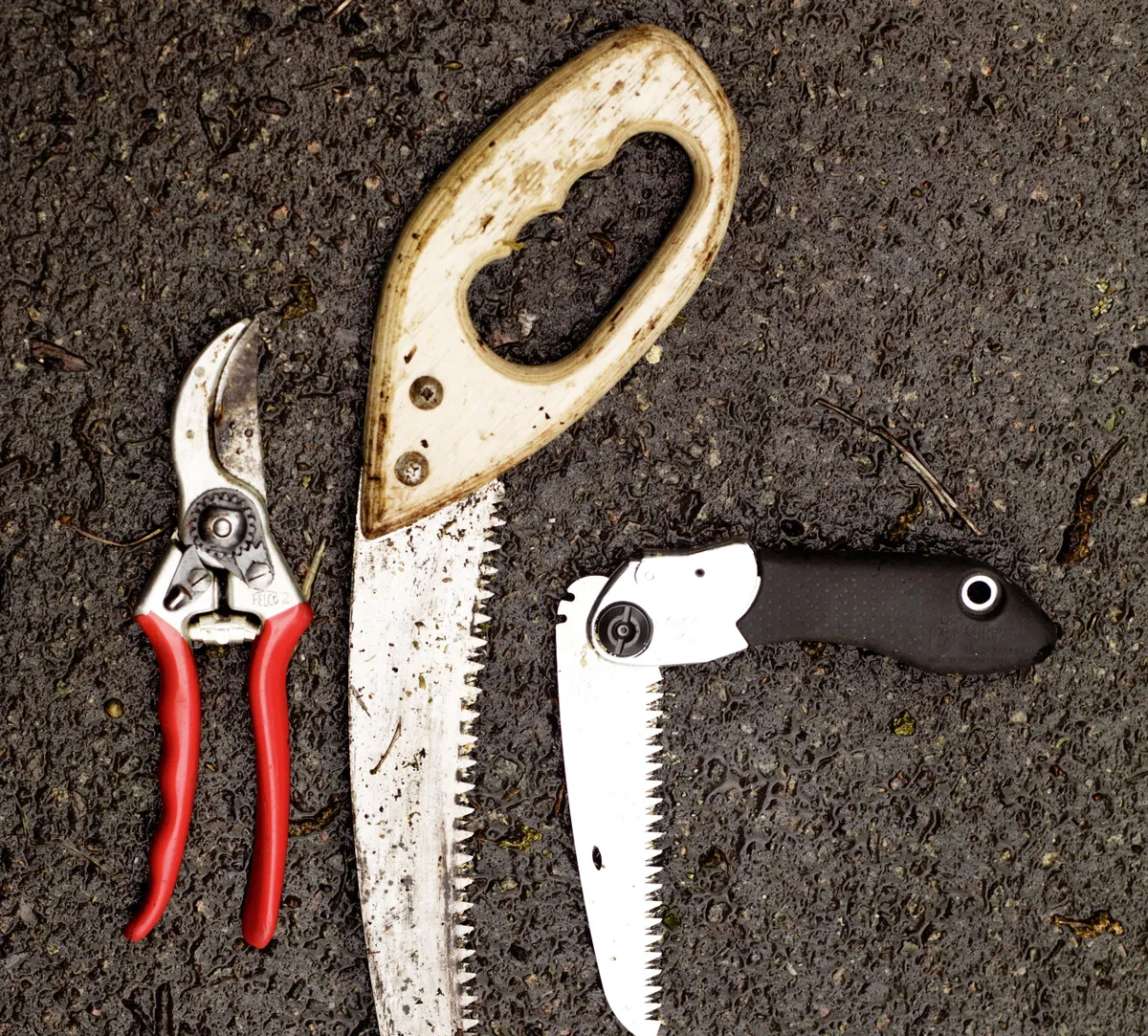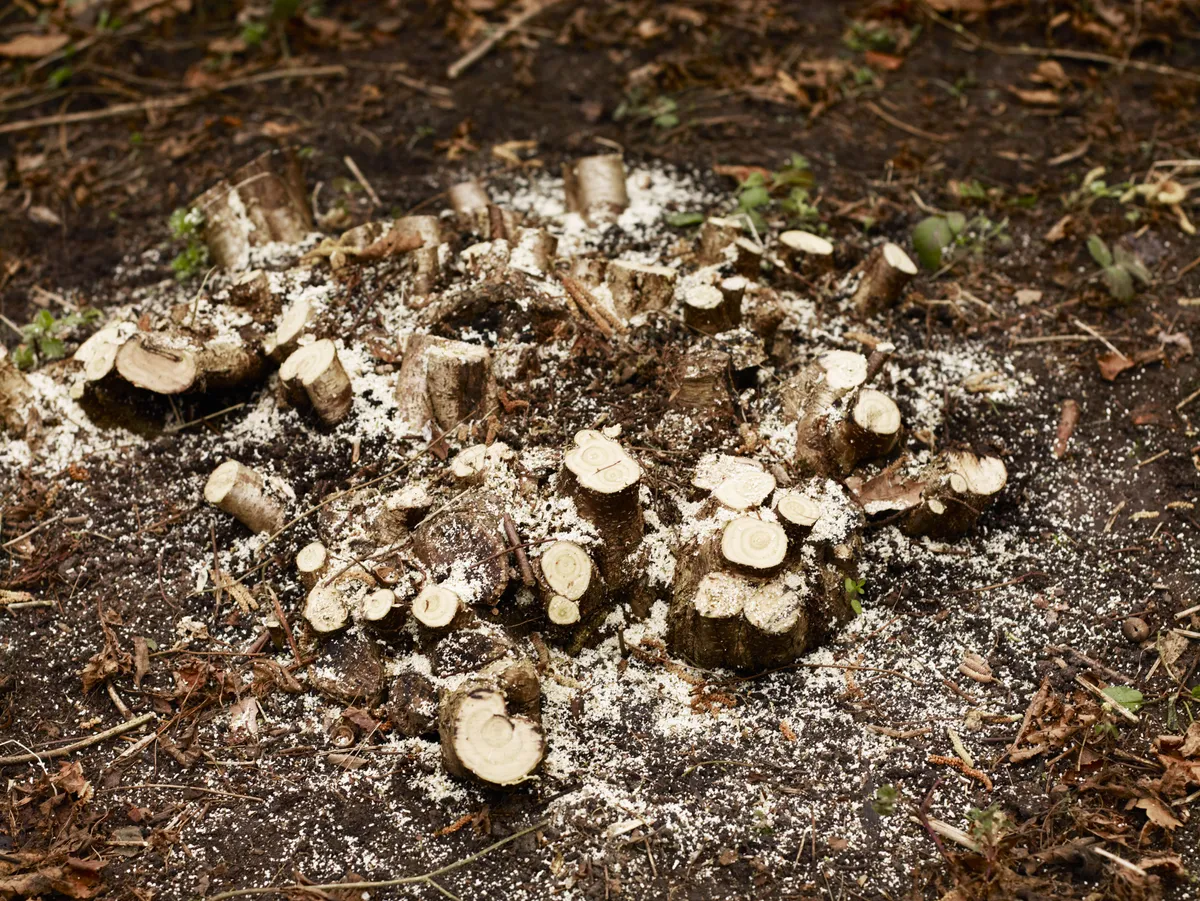Coppicing a tree or shrub – cutting it right back to the ground – can feel like a drastic and harsh move. But coppicing can be incredibly helpful for ensuring the growth of trees and tree health. It can also help to promote colourful winter stems on shrubs such as dogwood and willow, and can also encourage larger leaves on trees, such as the foxglove tree.
You might also like
- The principles of pruning
- You need to prune wisteria twice a year - here's how and when
- How to coppice hazel
How to coppice plants
What is coppicing?
Coppicing means cutting trees and shrubs back hard – right to the ground.
Coppicing exploits the natural growth pattern of trees: if the main stem has been cut or has fallen, it will send up shoots in a bid to survive. Essentially, if the root system has been used to feeding a large tree, it will put its energy into producing new growth and foliage.

Once an essential part of woodland management, coppiced trees were vital to the ancient economy, providing fuel, building and fencing materials. Today, conservationists are bringing back coppicing to increase biodiversity – cutting trees back opens up woodland, letting in light and encouraging a wider range of plants and wildlife.
What are the benefits of coppicing?
One of the key by-products is that your tree or shrub is guaranteed to respond with vigorous new growth. This allows you to manipulate its shape and size more easily.
Depending on the plant, it may also stimulate vibrantly coloured new stems and dramatic, large leaves.
Coppiced trees also increase in breadth to provide good screening; and they can be treated like shrubs and used in borders with perennials and ground cover planting.

As well as the ornamental benefits, coppicing can be a practical solution for managing a large established tree in a small garden. For example, if you have a tree near a house on clay soil, coppicing will slow down root-growth and help to manage the threat of subsidence. Complete removal of a big tree could have far more serious consequences.
Tony Kirkham advises: “If a tree is in danger of becoming too big for its location, you are better off managing it rather than removing it completely. You can grow it to a size that fits in with your garden and that you can deal with.”
When should you coppice?
Generally the advice is to coppice in late winter or early spring.

The tools you need for coppicing

- Felco No 2 secateurs (or No 9 if you are left-handed)
- A sharp pruning saw
- Short bladed folding saw
- NOTE Don’t use long-handled loppers for the final cut. The blades can often squash the stems, causing bruising, which leads to die-back and subsequent rotting.
Don't miss our round up of the best pruning tools.
How to coppice trees
In the past, sweet chestnut and hornbeam were the commonly grown for coppicing. But most trees will respond positively to a ‘brutal’ chop – as long as the tree is well established and has not been grafted.
The size and style of our gardens usually restricts our choice of trees. While plenty of smaller trees are prized for their bark, flowers and autumn foliage, larger-growing species are often left out of the equation. However, by managing trees and large shrubs as coppiced specimens, you can open up a whole new world of choice and ornamental potential.
Trees that you should coppice

Hornbeam

Carpinus betulus was once one of the most commonly coppiced trees, its dense wood prized as fuel. Coppiced for garden use, the hornbeam would offer a dense foliage backdrop or screen, as when used for hedging. Looking for the best trees for small gardens?
Birch

Betula species also produces spring catkins and delicate new foliage – coppicing encourages the much prized multi-stemmed growth that makes for a beautiful winter bark display.
White mulberry
Morus alba is valued for its foliage and its fruit. In China it is traditionally coppiced so that it produces the large, fleshy leaves that are the preferred diet of the silk worm.
Small-leaved lime tree
Tilia cordata will produce bigger, heart-shaped leaves after coppicing and some nurseries will supply ready-coppiced specimens.
Eucalyptus

Gum trees such as Eucalyptus glaucescens are fast-growing and are often allowed to get out of proportion in gardens, but coppicing eucalyptus is a way of managing its size. The added bonus is that the juvenile foliage is smaller, rounder and paler than the mature, finger-like leaves; these are the sprays often used by florists.
Red oak
It’s rare to see now, but there was a tradition of coppicing oaks for boat building because the regrowth is often curved, and was much prized for making keels. The young foliage of Quercus rubra would make an unusual addition to an ornamental border.
Paulownia tomentosa (foxglove tree)

When the foxglove tree, Paulownia tomentosa, is coppiced each year, it has leaves that reach 60cm across on shoots 2.5m tall – popular in jungle-style gardens.
Here's how to grow foxglove tree
Catalpa bignoides (Indian bean tree)
Coppicing Catalpa also results in large, dramatic leaves. It will produce no flowers, however, and therefore no beans.
Hazel (Corylus avellana)

Hazel grows long, straight stems in response to a hard prune and coppiced hazels have a broad, open habit with branches carrying leaves in airy, horizontal layers. Here's our guide on how to coppice hazel.
How to coppice shrubs
Shrubs are coppiced in order to create colourful winter stems, or bold foliage.
Shrubs to coppice
Dogwoods

The new stems of Cornus alba ‘Kesselringii’ are a much richer, dark maroon red than ‘Sibirica’, and this cultivar is also slower-growing. The acid green new stems of C. sericea ‘Flaviramea’ look dazzling in the watery light of a clear spring day. Read more about how to coppice dogwood.
Willow
Coppiced willows such as Salix alba var. vitellina ‘Britzensis’ also produce beautiful coloured young stems which make a fantastic winter display.
Holly

Coppice a mature holly (Ilex aquifolium) and it will produce extra-prickly young foliage which is much more dense and attractive and also makes an effective barrier plant. Read more about growing holly.
Judas tree
Coppicing Cercis siliquastrum will result in large, lustrous, heart-shaped leaves.
Don't miss our guide to the principles of pruning.




